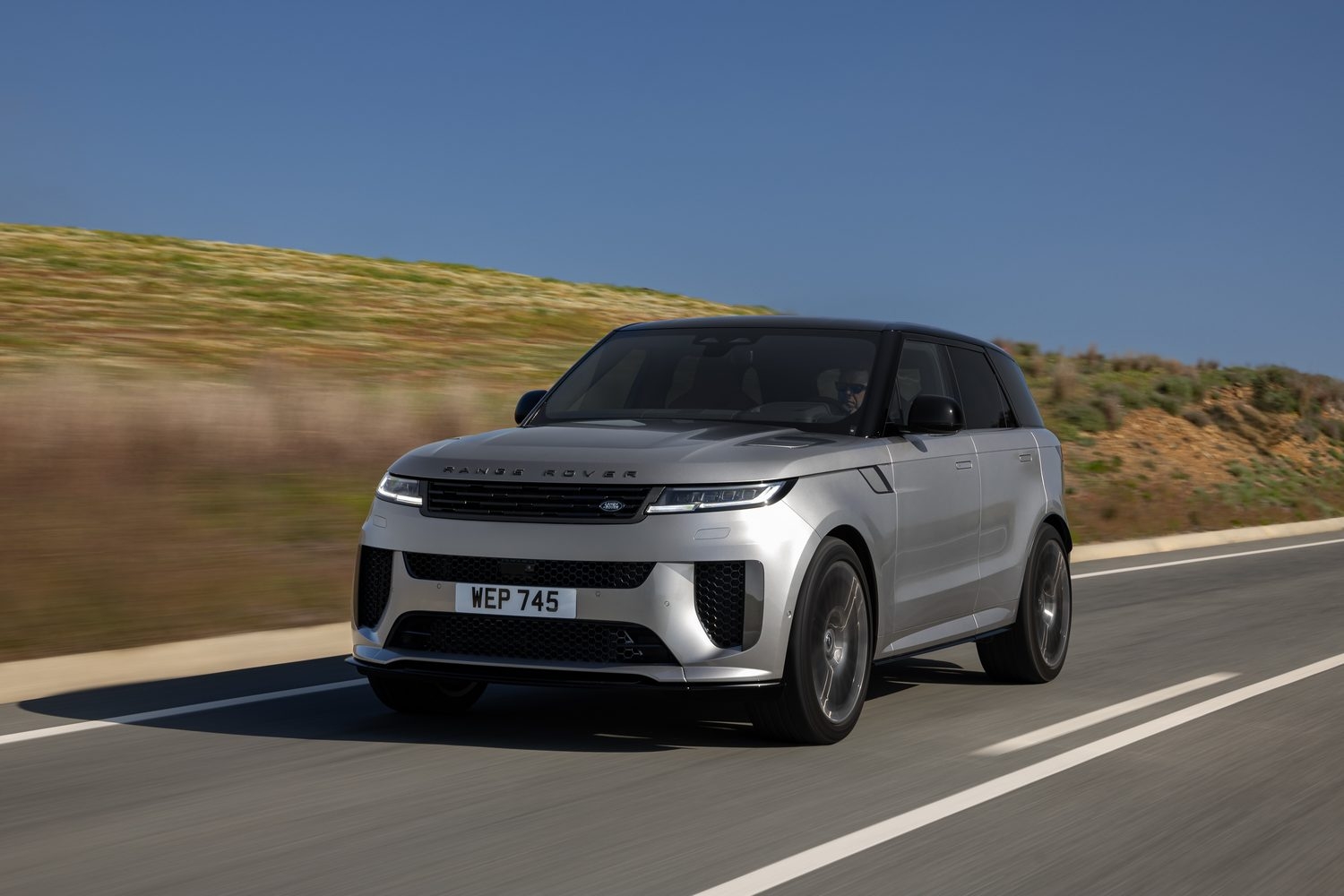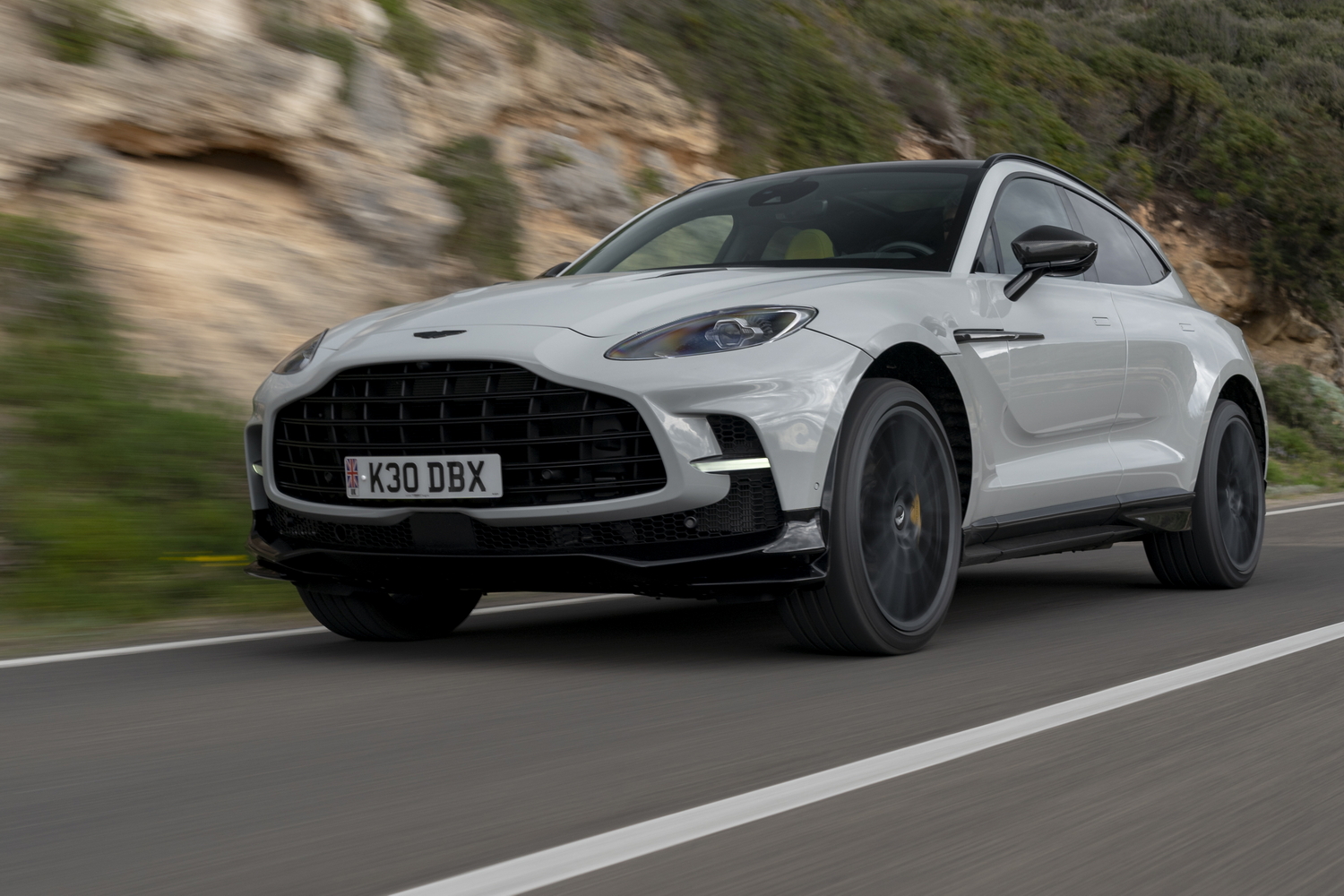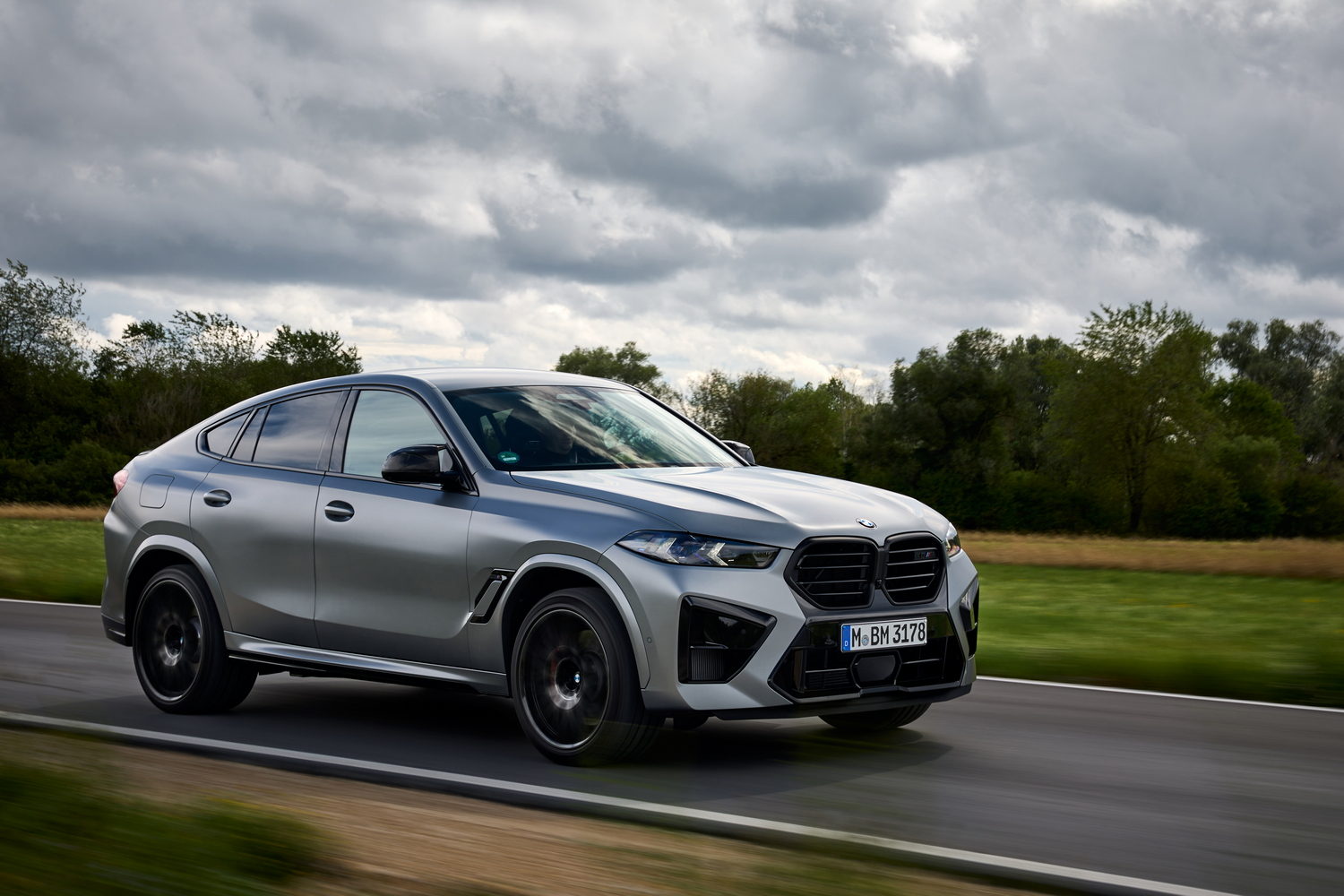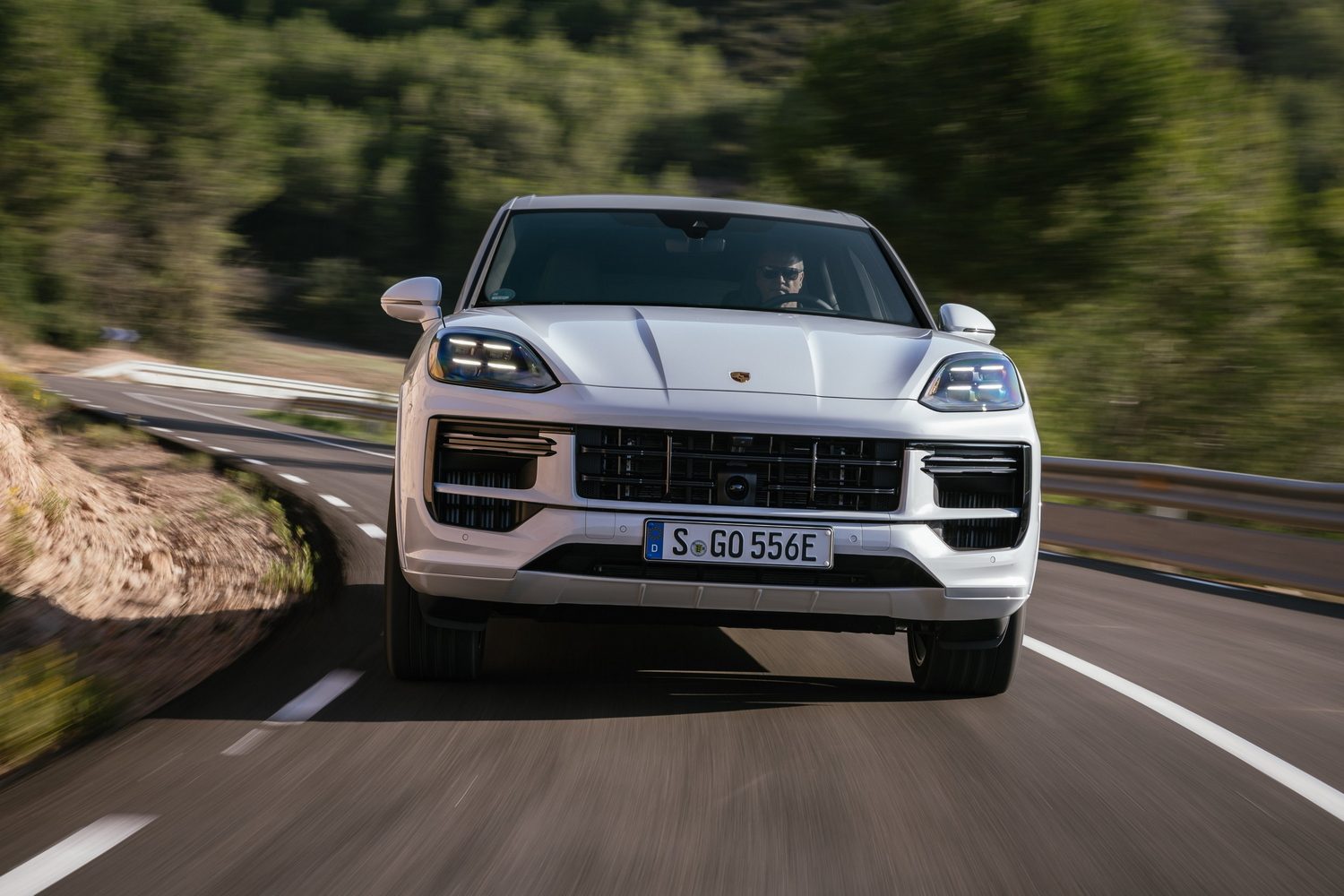The performance SUV market is really taking off around the world, and though Land Rover has already launched quick versions of its Range Rover Sport, nothing has quite managed to replace the old, range-topping, rip-roaring SVR model. Until now, that is. It's called the Range Rover Sport SV, and it's designed to build on everything the SVR offered without detracting from the things that make the more conventional Sport models so popular. But will that be enough to allow the SV to compete with sporty SUVs from some pretty serious supercar manufacturers?
In the metal
At first glance, the SV doesn't look all that different from any other Range Rover Sport, and that's intentional. Whereas the old Range Rover Sport SVR looked like a much more aggressive car than the stock Sport, Land Rover has opted to make the new Sport SV an evolution of the Sport lineage, rather than something completely different.
There are muscular bumpers, massive 23-inch alloy wheels and four exhaust outlets, plus a few vents and grilles not found on the standard Range Rover Sport, but otherwise, it's pretty conventional. The jury is still out on the cleaner, more modern styling found on the latest Range Rover models - some observers hate it, and others love it - but we think the SV styling upgrades are quite well considered, even if they aren't especially bold.
You can liven things up a bit by perusing the options list and choose the carbon-ceramic brakes with their lurid callipers and the 23-inch carbon wheels, designed to save weight. In fact, you can go crazy with the carbon, including carbon lettering for the bonnet and some bits of exterior trim. But all this stuff is designed to do more than just look natty - it's apparently there to save weight, and with the right specification, customers can shave 76kg from the standard car's 2,560kg empty weight.
To be honest, that doesn't make an awful lot of difference - the car is still enormously heavy - and because that's an empty weight, rather than a kerb weight, it doesn't include a 75kg driver or the last 10 per cent of fuel needed to fill the tank. Even if you choose all the weight-saving stuff, the SV is still heavier than a BMW X5 M Competition, or even a Bentley Bentayga V8 S.
That's partly because the Sport SV is big, with much the same exterior measurements as any other Range Rover Sport. And that means you get much the same interior dimensions, too, including a chunky 647-litre boot and ample rear head- and legroom. There's plenty of space in the front, too, and storage is perfectly adequate, with two gloveboxes to choose from.
In among all this Range Rover Sport normality, however, the SV does have a few little upgrades. A sports steering wheel takes centre stage, and there are sports seats and some carbon trim dotted around the place. There's no word on how much weight that saves, though.
Whatever it is, it'll almost certainly be undone by the inclusion of Land Rover's new Body And Soul Seating (BASS). Yep, that's the backronym Land Rover has gone with to describe the new seats, which are beautifully sculpted, and can incorporate a set of actuators that feed pulses into your body. Designed to work in tandem with music, the system is supposed to improve engagement with the audio system and provide health benefits such as lower blood pressure and a more stable heart rate, while not reducing drivers' alertness. Unfortunately, we didn't experience any wellness benefits through the system. It just gave us strange motion sickness that vanished the moment we turned it off.
Apart from all that, and some cool new leather-free upholstery that feels remarkably upmarket, the SV's cabin is basically identical to that of any other Range Rover Sport. That means you get a lovely minimalist dashboard with just a massive central touchscreen and a clear digital instrument cluster, plus some really nice materials. Sure, a few touch points feel quite cheap for a car that's set to cost six figures, including the gear selector and the steering wheel buttons, but the cabin generally feels well made. It just doesn't feel all that special compared with other Range Rover Sport models, and that's a pity.
At least it gets plenty of technology, with Land Rover's latest touchscreen interface proving really easy to get along with, even if it takes a bit of getting used to. Unless it's in its 'dark' setting, with white icons on a dark background, some controls are quite difficult to see, and the menus aren't always logical, but it looks great and it works well with smartphone integration technology. The same goes for the digital instrumentation and the head-up display. Neither system is perfect, but they work nicely and give you all the information you need, so we can't mark the Range Rover down there.
Driving it
The Range Rover Sport, whether the SV model or not, has a number of jobs to do, and not all of them make natural bedfellows. Combining the qualities of a comfortable luxury saloon, a tough 4x4 and a moderately sporty executive car is not easy in any context, but the SV adds the demands of an out-and-out sports car to the mix. Yet somehow, thanks to the genius of Land Rover's Special Vehicle Operations (SVO) department, the SV manages to integrate that capability almost seamlessly.
We say almost seamlessly because there are some compromises. As standard, for example, the SV comes with all-season tyres, rather than stickier summer tyres - although the latter are available optionally. But the all-season rubber means the car can maintain some of its off-road capability, even if the handbook says you have to remove the big, aerodynamic front splitter before tackling any difficult terrain. Apparently, though, removing the splitter is easy enough, even if you will need to crawl under the bumper and release half a dozen screws, which isn't necessarily ideal in the darkest corners of the countryside.
Anyway, with the splitter removed, the SV is more or less as capable as any other version of the Range Rover Sport, which is to say, very capable indeed. It comes with all the usual goodies, including locking differentials, hill descent control and a clever traction control system that sets the power delivery up according to the surface that's being traversed. There's tech that tells you how deep a puddle you're driving through is, and cameras that can show you the surface below and around the car. There's no low-range gearbox, though, so the SV simply has to rely on the ample torque of its V8 engine.
And torque is certainly not in short supply. The new SV may have done away with the 5.0-litre supercharged V8 of the old SVR, but it has replaced it with a 4.4-litre BMW-derived V8 with two turbochargers. In essence, it's the engine you'll find in the X5 and X6 M Competition models, as well as the BMW M8 Competition, but SVO has tuned it up a bit to provide an extra 10hp. That takes the total maximum outputs to 635hp and 750Nm of torque, both of which can be defined as "lots". With all that power heading to all four wheels via an eight-speed automatic gearbox, the SV definitely doesn't want for grunt.
Although it's not the primary goal of the SVO team, that means the SV can lumber over particularly rough terrain imperiously, with almost nothing proving too difficult. Even climbing steep slopes will require little more than a gentle squeeze of the accelerator, while the traction control system manages to find some way of putting down the power even on slippery clay.
All that is impressive, of course, but it's largely stuff your conventional Range Rover Sport can do, too. What a normal Sport can't do, however, is get from 0-100km/h in 3.8 seconds and roar on to a top speed of 290km/h, but the SV can.
In truth, it doesn't feel that fast - possibly because the car is just so big and heavy - but in its most aggressive SV mode, the Range Rover responds rapidly. The gearbox is impressive not so much because of the impact it makes, but because you barely notice it most of the time, although Dynamic mode can cause it to make some interestingly timed gearchanges.
But straight-line speed isn't the be-all and end-all for the SV. First of all, there's the engine's sound, which isn't quite as dramatic or as characterful as that of the old SVR, but it's still meaty and menacing enough. And it makes a lovely snarl in its sportiest settings.
Then there's the way the car handles. SVO has gone to great lengths to maximise the capability of the Sport's chassis without completely reinventing it, so there's air suspension that does without anti-roll bars (which frees up the wheels to travel up and down more while off-roading) and has electronic '6D' control. That means the car can effectively counteract lean in corners and pitch under braking, helping to keep the body more level. Team that with the optional ceramic brakes and the standard-fit retuned steering, and you've got a car that corners far better than a 2.5-tonne SUV has any right to.
While it's true the SV can't quite compete with the most agile cars in its sector - the Aston Martin DBX707 and the Lamborghini Urus, for example - it's good enough to be mentioned in the same breath as the Porsche Cayenne, BMW X5 M Competition and Bentley Bentayga. It is a stunningly good car to drive, particularly considering its size and weight, and it offers the behaviour of a well-sorted hot hatchback despite its immense bulk.
Normally, as is the case in the Urus, such handling prowess comes at the cost of comfort, but if you switch the SV into Comfort mode, it'll soak up the bumps as well as anything else out there. Even the Rolls-Royce Cullinan is barely more absorbent. Like the Roller, the Range Rover is at its best on the motorway, where it seems to waft as if some of the weight has been lifted from the wheels. It's still in touch, in as much as you can still feel what's going on through the wheel, but you're elevated above such trivialities as cats' eyes and potholes.
That ride is, perhaps, the most impressive single part of the SV experience, but that's partly because of how capable the car is in every other field. Literally. To get this massive breadth of ability is staggering, and though the SV is not the only car to mix these capabilities impressively well, it's the most off-road orientated option in a class where road-holding has generally been prioritised over all else.
What you get for your money
The Edition One version of the SV tested here will not officially be available in Ireland, but then it is something of a limited-edition offering. A proper, full-production SV is coming for the 2025 model year, but there's no word on when we'll see it over here. Irish pricing is still unknown, too, but elsewhere in the world, the SV Edition One is right up there with the likes of the Aston Martin DBX707, Lamborghini Urus and Bentley Bentayga, let alone the BMW X6 M Competition or the Porsche Cayenne. In short, don't expect a bargain basement price.
Summary
There's no denying the brilliance of the Range Rover Sport SV. The 'standard' Sport was already all things to all customers, from a rugged off-roader to a luxury limo, but the SV manages to add proper sports car ability to that list without detracting from the other qualities. In itself, that's to be applauded, but we have reservations. The SV may be measurably better than the old SVR, but it's somehow slightly less special, with a more muted sound and atmosphere. And that's an issue when the price is expected to be on a par with Lamborghinis, Bentleys and Aston Martins. Nonetheless, while the SV may not be perfect, there's little else on the market with such a broad range of talents.





























